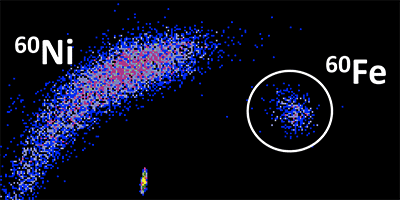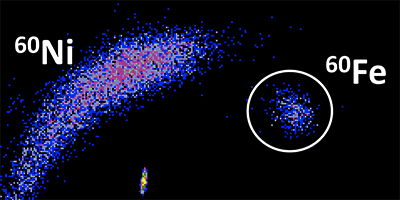Fixing a Million-Year Clock
Radioactive iron-60 ( Fe) is produced at the core of large stars and in supernovae, and it has a half-life of roughly a million years, so its abundance can be used to date astrophysical events on a similar time scale. Scientists have, for example, used the small amount of Fe deposited in deep-sea crust to trace the history of supernovae near our Solar System, which may have affected Earth’s climate in the past. But the best measures of Fe’s half-life—one performed in 1984, the other in 2009—disagree by nearly a factor of . Now, a new experiment settles the discrepancy, enabling more astrophysical studies based on the isotope, such as the monitoring of nucleosynthesis in stars.
To derive the half-life of a long-lived isotope, scientists use samples containing a known number of the nuclei and detect how many of them decay per second. In the case of Fe, its decays are monitored by detecting the gamma rays emitted by its daughter nucleus, cobalt-60. But the main uncertainty in earlier experiments has been the initial number of decaying Fe nuclei. Working with an iron sample extracted from irradiated copper, Anton Wallner, at the Australian National University, and his colleagues used accelerator mass spectrometry to determine the small concentration of Fe isotopes. By comparing this number to the concentration of Fe, another rare isotope, they were able to “cancel out” some of the systematic errors that plagued earlier experiments and accurately gauge the Fe amount. The half-life they find agrees well with the 2009 value; averaging the two together, Wallner et al. report a value of million years and a uncertainty.
This research is published in Physical Review Letters.
–Jessica Thomas





